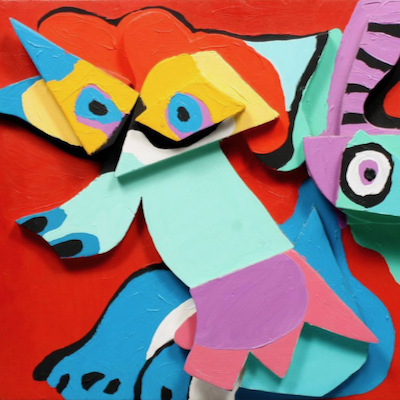
Details
Artist
Styles
Lithograph // Christian Dotremont's À la clé qui ouvre..., a lithograph from 1978, exemplifies his signature style of expressive calligraphic abstraction. Dotremont, a co-founder of the CoBrA movement, was known for his logograms—artistic scripts that blend poetry and abstract forms. In this piece, the swirling black forms, resembling a mix of letters and symbols, create a dynamic visual rhythm across the composition. The text at the bottom, partly legible, seems to evoke a poetic narrative, inviting viewers to interpret its meaning through both its visual and linguistic qualities. Limited to an edition of 25, this artwork captures the essence of Dotremont's exploration of language as both visual art and written expression, blurring the line between image and text.
A la clé qui ouvre…, 1978
form
Medium
Size
40 x 40 cm
- Inches
- Centimeters
Edition
Price
Details
Artist
Styles
Lithograph // Christian Dotremont's À la clé qui ouvre..., a lithograph from 1978, exemplifies his signature style of expressive calligraphic abstraction. Dotremont, a co-founder of the CoBrA movement, was known for his logograms—artistic scripts that blend poetry and abstract forms. In this piece, the swirling black forms, resembling a mix of letters and symbols, create a dynamic visual rhythm across the composition. The text at the bottom, partly legible, seems to evoke a poetic narrative, inviting viewers to interpret its meaning through both its visual and linguistic qualities. Limited to an edition of 25, this artwork captures the essence of Dotremont's exploration of language as both visual art and written expression, blurring the line between image and text.
What is the CoBrA movement?
CoBrA stands for Copenhagen, Brussels, and Amsterdam; the group was formed with a desire to break away from the existing art movements of the time. Their critique of Western society led them to experiment and evolve into a significant international movement. CoBrA was founded on November 8, 1948, at the Notre Dame Café in Paris, where its manifesto was signed by Karel Appel, Joseph Noiret, Corneille, Christian Dotremont, Constant, and Asger Jorn. The group was united by a shared commitment to freedom in both form and color, and their work emphasized experimentation and spontaneity.












